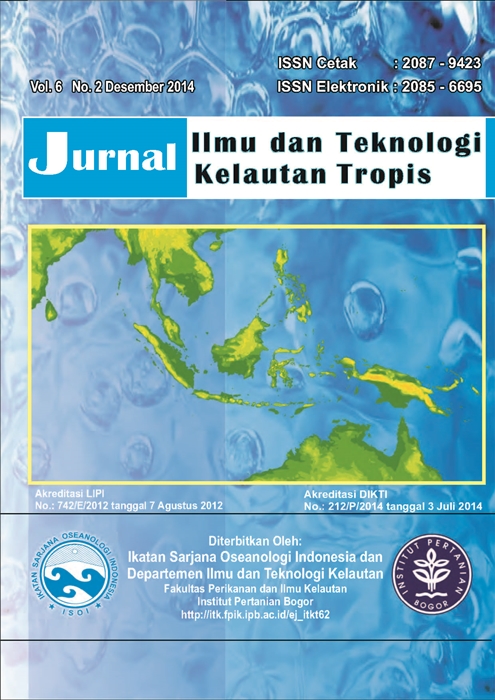MANGROVE COVERAGE CHANGE DETECTION USING LANDSAT IMAGERIES BASED ON HYBRID CLASSIFICATION IN KEMBUNG RIVER, BENGKALIS ISLAND, RIAU PROVINCE
Abstrak
ABSTRACT
The limited scientific information and lack of attention from stakeholders on the status of mangroves in Kembung River functioned as a basis of this study. Four series of Landsat data recorded in 1996, 2002, 2010, and 2013 were used to map mangrove land cover and changes detection. Hybrid classification technique, a combination of the object-based and random forest classifications, were applied in this study. The result showed that based on hybrid classification, mangrove coverage was detected within 82.6-88.4% overall accuracy. Change detection analyses showed that the mangrove area of Kembung River was relatively stable. For nearly two decades, we found mangrove loss about 197.2 ha, gain of 251.1 ha, and unchanged of 2904.9 ha. Changes in mangrove were generally caused by anthropogenic factors such as mangrove replanting, logging, changes over the function of mangroves into the road, embankment, settlement, shrimp farms, and natural growth. Serious attention from various parties are needed to maintain the existence and sustainablility of mangrove ecosystems in Kembung River.
Keywords: Mangrove, Sungai Kembung, monitoring, Landsat, hybrid classification
Penulis
The author submitting the manuscript must understand and agree that the copyright of the article manuscript must be submitted/transferred to the Jurnal Ilmu dan Teknologi Kelautan Tropis. This work is licensed under the Creative Commons Attribution-ShareAlike 4.0 (CC BY-SA) International License in which the Author and Reader can copy and redistribute the material in any media or format, and remix, modify and build material for any purpose, but they must provide appropriate credit (citing articles or content), provide a link to the license, and indicate whether there is a change. If you mix, change, or create material, you must distribute your contribution under the same license as the original.


